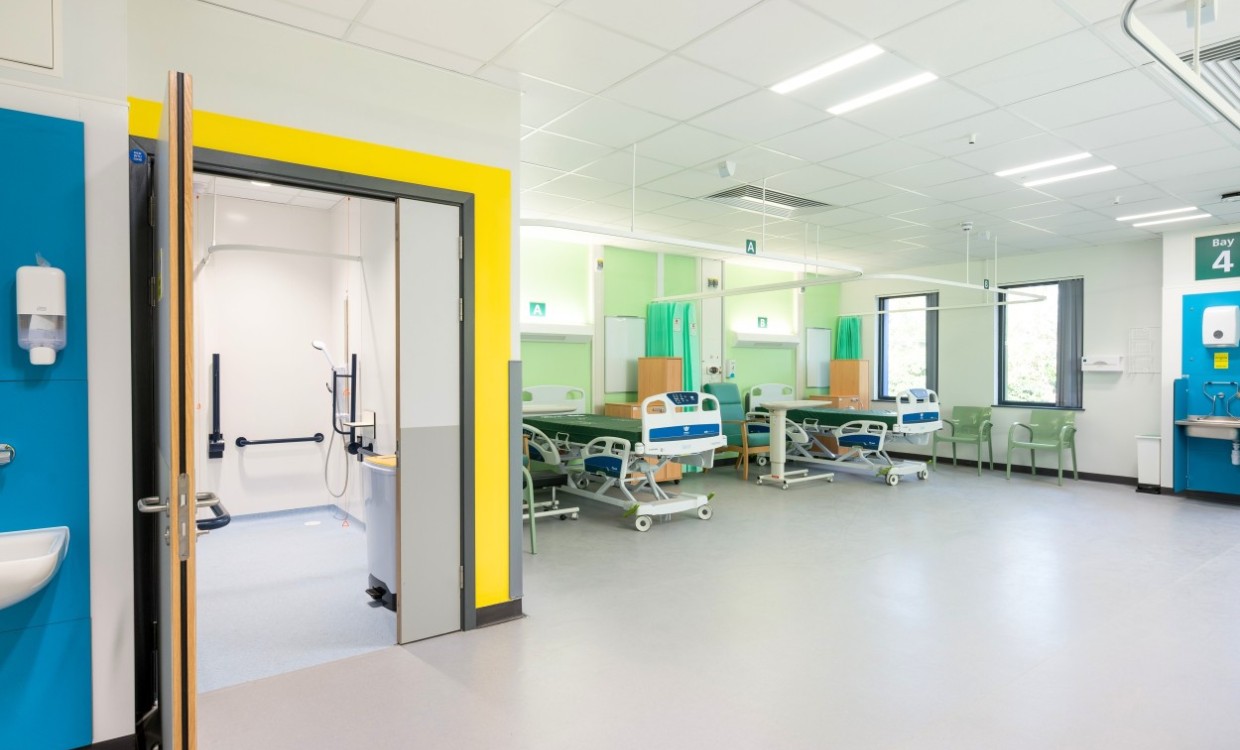

As winter approaches, the NHS faces one of its most demanding seasons. Waiting lists have reached record highs — over 7.3 million people in England were waiting for routine treatment as of March 2025 — and seasonal illnesses are set to further increase demand for urgent care. Winter 2024 saw the NHS going in “under more pressure than ever before”, with A&E attendance and admission numbers under strain. Hospitals and Healthcare Providers need new clinical spaces that can be deployed rapidly and operate efficiently.
Traditional construction methods, long burdened by delays, high costs and site disruption, struggle to meet such urgency. Offsite Construction offers a smarter, faster and more resilient alternative to meet the healthcare’s sector increasing demand.
Here are five ways offsite construction outpaces traditional builds, providing the NHS with winter-ready, high-performance spaces when they’re needed most.
1. Speed of Delivery: A Matter of Weeks, Not Months:
Time is the most critical resource during winter. Traditional healthcare builds can take 18–24 months from concept to completion. In contrast, modular healthcare facilities can be designed, manufactured and installed in under 6 months - with some wards delivered and operational within just 12–20 weeks.
Because 90% of manufacturing occurs offsite in precision-controlled factory environments, groundwork and building fabrication occurs in parallel rather than sequentially. This parallel approach dramatically reduces overall timelines. For the NHS, this means new facilities can be ready before winter pressures peak.
2. Flexibility and Scalability Built In
Healthcare demand fluctuates throughout the year, and nowhere is that more evident than in winter. Offsite construction allows healthcare providers to scale capacity quickly, adding or removing units as patient volumes change.
Unlike traditional buildings, modular healthcare spaces can be expanded, reconfigured or relocated without major structural works. This flexibility enables Trusts to respond dynamically to emerging needs, from creating new acute wards to isolating infectious disease units or expanding outpatient capacity. These adaptable layouts support both short-term surge capacity and long-term planning, ensuring that investments made to address today’s winter pressures continue to deliver value well into the future.
3. Minimal Disruption to Existing Healthcare Operations
Building works on live hospital sites can cause major disruption, from noise and dust to logistical and safety challenges. Offsite methods minimise these issues. With majority of the manufacturing works taking place away from the site, onsite labour hours and vehicle movements are reduced by up to 80%-90%, ensuring day-to-day hospital operations remain uninterrupted.
This approach not only improves patient and staff safety but also reduces disruption for the surrounding communities. When offsite components arrive onsite, installation is rapid and predictable, avoiding the prolonged disturbance typical of traditional construction.
4. Sustainability and Energy Efficiency at the Core
The NHS has set an ambitious target to become net zero by 2040. Offsite construction supports this mission through highly efficient manufacturing, reduced waste and integrated sustainable technologies.
Factory-controlled environments generate up to 90% less waste compared to traditional builds, while precise quality control ensures superior energy performance. Many offsite facilities now incorporate air source heat pumps and low-carbon materials as standard, helping to reduce both operational emissions and long-term running costs.
By embedding sustainability into the construction process itself, offsite facilities don’t just meet short-term capacity challenges, they align with the NHS’s long-term climate commitments.
5. Patient-Centred Environments Fit for the Future
Offsite construction brings resilience not just in structure but in service delivery. Facilities are engineered to high standards, often exceeding traditional build quality in terms of airtightness, insulation and environmental control.
This resilience extends beyond the physical fabric. Modular wards and clinics are designed for mass personalisation, enabling Trusts to specify layouts, finishes and medical equipment to meet precise clinical needs. The result is a patient-centred environment that enhances safety, comfort and staff experience.
As the healthcare landscape evolves, these spaces can be upgraded or repurposed with minimal downtime, ensuring longevity and adaptability.
A Smarter Way Forward for Winter and Beyond
Offsite construction represents more than a faster way to build; it’s a modern, data-driven approach that aligns with NHS priorities.
By adopting offsite solutions, healthcare providers and NHS Trusts can:
- Deliver high-quality, clinically compliant spaces up to 70% faster than traditional builds.
- Reduce overall project waste and carbon emissions.
- Expand capacity precisely where and when it’s needed most.
As winter pressures continue to mount, these benefits are not just operational advantages, they’re critical to safeguarding patient outcomes.
At Merit, we’re proud to support NHS Trusts and Healthcare Providers in meeting these challenges head-on, delivering smart, flexible and sustainable healthcare spaces that keep the nation’s health services resilient - whatever the season.



